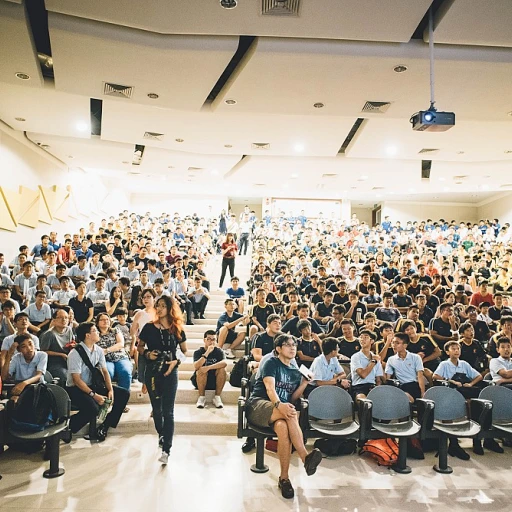
Understanding DEI Activities
Exploring the Foundations of DEI Initiatives
Diversity, Equity, and Inclusion (DEI) activities are pivotal in shaping a positive workplace culture that values each team member. These initiatives go beyond mere policy changes, aiming instead to nurture an environment where every participant feels valued, respected, and empowered. By engaging in DEI efforts, companies can foster a more harmonious work environment where diversity is not just acknowledged, but celebrated. Many activities focus on enhancing diversity within a workplace, including structured training sessions that address unconscious bias and the use of inclusive language. Such programs are critical for ensuring that team members are not only aware of biases but actively work to counter them. This collective consciousness helps cultivate a more inclusive culture where all employee voices are heard and respected. Inclusion activities often take the form of cultural celebrations and team-building exercises designed to amplify the diversity of backgrounds and perspectives within the team. These activities can involve everything from organizing virtual tours to highlight different cultures to hosting employee engagement sessions that encourage employees to share their experiences and unique perspectives. The role of these initiatives is not just about creating a diverse team but ensuring that the diversity team members bring is leveraged for greater innovation and creativity. A strong diversity inclusion strategy can lead to improved employee satisfaction and retention. For HR leaders considering implementing DEI initiatives, understanding the complexities and potential impacts of these activities is crucial. More insights into the balancing of engaging employees in DEI programs without crossing personal boundaries can be explored in this detailed guide. Ultimately, DEI initiatives are key to building a more equitable and inclusive workplace that resonates with the organization's values and goals.The Role of Human Resources Analytics
Utilizing Data to Foster Diversity and Inclusion
In the modern work environment, fostering a culture that prioritizes diversity, equity, and inclusion (DEI) is more crucial than ever. Human Resources Analytics plays a pivotal role in driving this transformation. By capturing, analyzing, and interpreting data, HR teams are equipped to identify trends, issues, and opportunities related to diversity and inclusive practices in the workplace. Through meticulous analysis, diverse team dynamics and the effectiveness of inclusion activities can be evaluated. This assists in designing initiatives that not only attract diverse talent but also encourage a sense of belonging among existing employees. By leveraging analytics, companies can cultivate a work culture where all team members feel valued, actively breaking down barriers of unconscious bias. Key Applications:- Using analytics to understand participation levels in DEI activities and training initiatives, ensuring employee engagement is continuously improved.
- Assessing the impact of cultural training and team-building activities to foster inclusive language and behavior among employees.
- Tracking diversity metrics and equity inclusion figures to meet organizational goals aligned with DEI workplace standards.
Identifying Key Metrics for DEI Success
Measuring DEI Effectiveness through Key Metrics
In any organization striving to enhance their workplace culture with DEI initiatives, identifying and monitoring the right metrics is crucial. These metrics not only provide insight into the current state but also gauge the progress and effectiveness of DEI activities in fostering an inclusive, diverse, and equitable work environment.
To effectively track DEI success, human resources departments must focus on metrics that highlight the impact of diversity, equity, and inclusion initiatives. Here are some essential metrics to consider:
- Employee Demographics: Understanding the diversity within the organization in terms of gender, age, ethnicity, and other characteristics is fundamental. This helps in assessing whether the workforce truly represents a diverse spectrum of people.
- Inclusion Index: An inclusion index measures how included employees feel in the workplace. This often comprises surveys asking team members to share their experiences with cultural inclusion, participation, and respect within the team and organization.
- Employee Engagement Scores: Engaged employees tend to perform better and contribute positively. Keeping track of employee engagement scores can reveal the influence of DEI initiatives on work culture and team spirit.
- Retention and Turnover Rates: High turnover rates might indicate problems with diversity or inclusion, suggesting the need for further investigation into what could be improved in team dynamics and workplace culture.
- Participation in DEI Activities: Tracking participation in DEI activities, including training sessions, team building activities, and virtual tours that aim at unconscious bias reduction, can provide qualitative data on employee commitment and engagement with these initiatives.
Establishing these metrics allows organizations to move beyond mere assumptions to concrete data-driven strategies for enhancing DEI in the workplace. By utilizing these insights, HR professionals can refine their DEI strategies and ensure consistent improvements in creating an inclusive work culture. For further understanding on how HR analytics can optimize these initiatives, consider exploring how arbitration proves effective in HR analytics.
Challenges in Implementing DEI Activities
Overcoming the Hurdles in DEI Initiatives
Implementing Diversity, Equity, and Inclusion (DEI) initiatives in a workplace can bring about a vibrant and inclusive work environment. However, there are several challenges that organizations might encounter during this process. Addressing these challenges is crucial to fostering a culture that truly embraces diversity and inclusion.
One significant hurdle is the potential resistance from team members and employees. Some individuals may feel uncomfortable or uncertain about change, particularly if they perceive it as a shift from established practices. Ensuring that employees feel involved in diversity inclusion activities and team building exercises can help mitigate resistance.
Efforts towards equity and inclusive culture can sometimes be hampered by unconscious bias, even among those who are well-meaning. Training programs focused on cultural awareness and history culture can play a pivotal role in addressing these biases, helping participants become more aware of their own preconceptions. Incorporating inclusive language and building activities into the daily work routine promotes an environment where team diversity can thrive.
Measuring the success of DEI initiatives is another challenge. While tracking diversity metrics is essential, organizations must also consider equity inclusion outcomes and the overall impact on the workplace culture. Employee engagement surveys and feedback sessions can be effective tools for evaluating how DEI activities influence employee sentiment and the work environment.
Virtual tours and workshops can also be useful in broadening the horizons of employees, providing them with experiences that enhance their understanding of different cultures and work practices. Encouraging employees to share their experiences and stories within the team can further solidify a sense of community and inclusion.
Lastly, with leaders often at the forefront of DEI initiatives, it is important that they are well-versed in embracing diversity and promoting a culture of equity inclusion. Investing in leadership development and clear communication of the DEI mission helps in aligning all organizational members towards common goals.
Case Studies: Successful DEI Initiatives
Illustrative Examples of DEI Excellence
Successful DEI initiatives demonstrate how strategic diversity activities can transform the workplace. By combining team building with effective diversity and inclusion strategies, organizations foster a culture where every team member feels valued. Here, we explore examples of companies who successfully integrated DEI initiatives, enriching their workplace culture and enhancing employee engagement.
- Comprehensive Training Programs: In several organizations, training has been pivotal in addressing unconscious bias among employees. By conducting workshops focused on inclusion activities, these companies have cultivated an inclusive work environment where team members actively participate in the creation of an equity culture.
- Diversity and Inclusion Councils: Forming a diversity team within the workplace has proven to be a strategic move. By involving team members from various departments, organizations have developed inclusive language policies and developed a more comprehensive understanding of cultural diversity, ensuring every employees' voices are heard.
- Virtual Tours and Cultural Celebrations: Some organizations encourage employees to engage in activities workplace environments that celebrate cultural history. This not only boosts diversity inclusion but also allows employees to share their traditions, reinforcing a sense of belonging and unity.
By taking these successful DEI activities as a blueprint, companies can cultivate inclusive cultures where employees flourish, fostering an atmosphere where people feel they are not just participants, but integral parts of a diverse work community.













